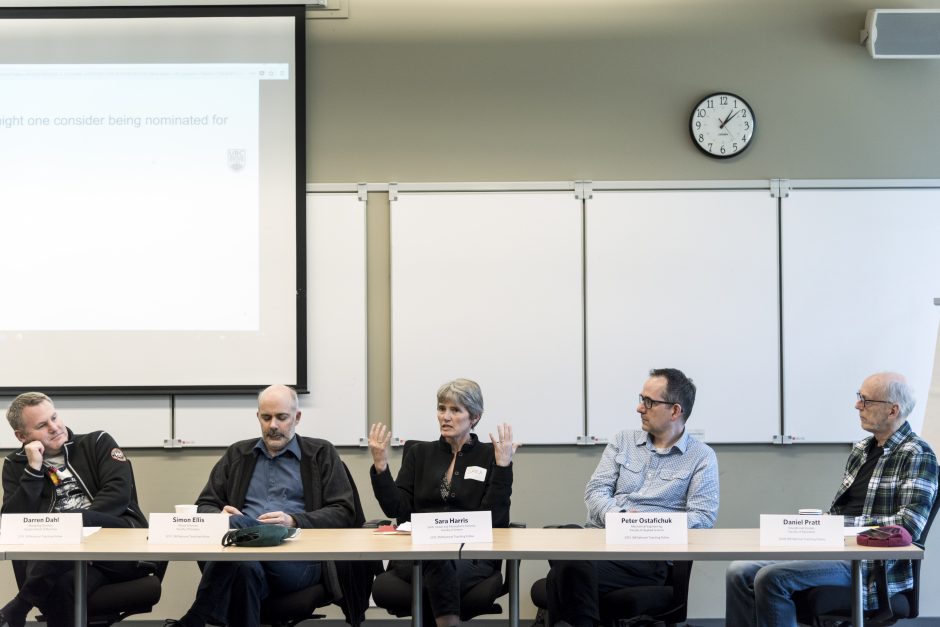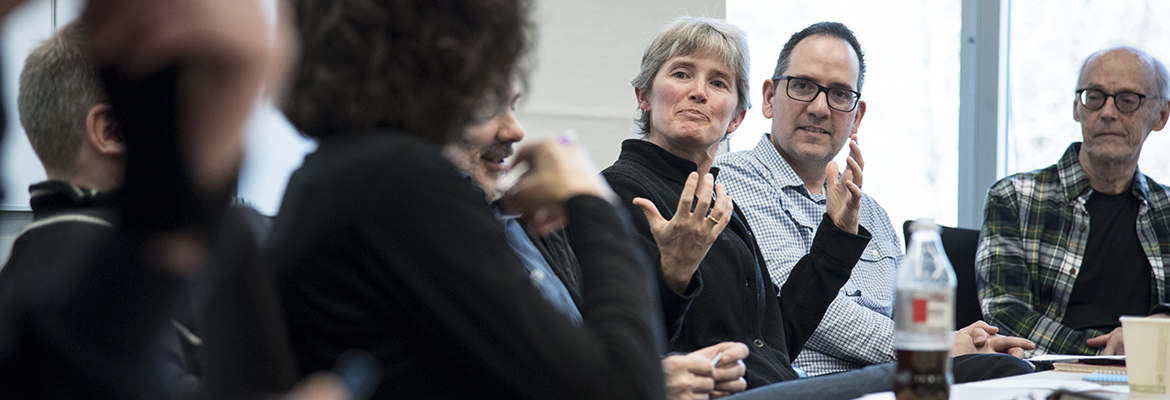This story is from 2019.
For more information, see the latest 3M National Teaching Fellowship updates.
Recognizing that the nomination process for the 3M National Teaching Fellowship can be a daunting task and that there are many exceptional UBC educational leaders who deserve to be recognized, the Office of the Provost and CTLT are offering support to future 3M nominees and nominators.
In March 2019, a group of recent 3M National Teaching Fellows at UBC came together and shared their practical experience of preparing for the nomination with aspiring educational leaders. Here is a snapshot of some of the wisdom shared at the panel discussion.

Panel of UBC 3M National Teaching Fellows
When in one’s career might one consider being nominated for this Fellowship?
- This Fellowship is for mid-career Faculty, as it is an award which requires a large body of evidence to demonstrate teaching excellence. It may also take a nominee a few years to gather enough evidence for their dossier.
- There are also expectations of the Fellow to continue their leadership at their institution and create an impact for the broader educational community in Canada. A Fellow in their mid-career will be in a good position to create such an impact.
- The 3M National Teaching Fellowship is also certainly not a lifetime achievement award; in other words, it is not only for those who are near the end of their teaching careers.
How might one prepare for potentially being nominated in a few years? What should one work on in order to receive a successful Fellowship later?
- Almost every nominee demonstrates excellence in teaching and learning; the panel agreed that exceptional teaching is the basic entry ticket for someone to be nominated. The distinctive factor lies in the nominee’s educational leadership and the impact created beyond one’s classrooms, department, Faculty, and institution.
- Nominees should also be mindful of whether the people who experienced the impact will eventually be able to prepare strong support letters.
When did you as a nominee start preparing, and when would you suggest nominees start preparing?
- Ideally, you should start no later than late May for the September deadline. The range of time it took our panelists to prepare was from three weeks up to 14 years. In the case of one nominee, he applied once and did not succeed; he re-applied again 14 years later, and it took him a full four months.
What aspects of the nomination process did you find challenging, and how would you suggest others address those challenges?
- Having a personal touch within the storytelling while staying within the page limit seems to be a consistent challenge among all 3M Teaching Fellows on the panel.
Do you have a sense of which aspects of nominations might make them more or less successful?
A coherent story from beginning to end is essential. The ability to admit and recognize early struggles and challenges, as well as identify ways to respond to and overcome challenges is important.
- In the case of one nominee, he used clues in students’ evaluations to form the skeleton of the story.
- A sense of innovation and the ability to move a ball forward are also good elements to be included in the story.
- Humanize yourself and the nomination package.
Be creative in order to maximize page limit and catch the attention of the adjudication committee. Examples included:
- Making use of the dividing pages by adding artwork from students.
- Using a poem at the end to tie the story together.
- Utilizing colours, e.g., to create a more coherent story, create clear headings, add photos and screenshots, etc.
It may be necessary to solicit more support letters than needed. Some letters may not be as coherent as others. They may focus on different aspects than what the nominees would like to focus on.
What do you suggest a nominee/nominator not do? What mistakes might they avoid?
One needs to strike a balance. We need to showcase our work, but not toot our horn too much. The package should be unique to each individual.
If there is one thing you would have done differently looking back, what would it be?
- Determine and share your narrative with your nominator early. It will make choosing the support letters easier.
- It is critical to foster ongoing dialogue between the nominee and nominator as this process can be a vulnerable experience for the nominee.
- Make sure to give yourself enough time to work on pulling together the package.
As a nominator, when did you start the conversation with a potential nominee? How do you provide them with the support they needed with the nomination?
- Conversations should start a year before.
- We should keep our eyes open for potential future nominees, as we don’t recognize each other enough.
What’s next?
- UBC internal deadline is August 30, 2019.
- Share sample nomination packages as requested.
- Act as an agent to connect nominees with 3M NTFs at UBC who are willing to talk with nominees about their dossiers.
- The UBC academic community should recognize and encourage exceptional educators to consider the Fellowship.
- CTLT can host one-on-one consultation to those needing an extra set of eyes on the nomination package.
Why prepare a nomination?
- This humbling process forces one to examine their teaching philosophy, why it is important, as well as how to put the philosophy into practice.
- The reflection helps one to identify gaps in their actions and take the time to reset goals and directions. It is energizing as one determines what to do in the next phase of their teaching career.
- It builds connections with deans, colleagues, and past students as you reach out to solicit support letters.

